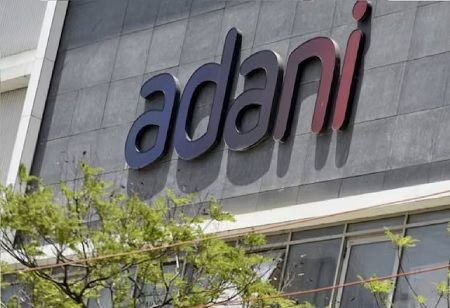
3 Adani Group Firms Join WEF's 'Industrial Clusters' Initiative

 Three companies from the Adani Group – Adani Enterprises (through its subsidiary Adani New Industries Ltd), Adani Ports and Special Economic Zone (APSEZ), and Ambuja Cements – have joined the World Economic Forum’s (WEF) ‘Transitioning Industrial Clusters’ initiative, forming the Adani Mundra Cluster. This announcement was made on Monday.
Three companies from the Adani Group – Adani Enterprises (through its subsidiary Adani New Industries Ltd), Adani Ports and Special Economic Zone (APSEZ), and Ambuja Cements – have joined the World Economic Forum’s (WEF) ‘Transitioning Industrial Clusters’ initiative, forming the Adani Mundra Cluster. This announcement was made on Monday.
The Adani Mundra Cluster is set to become one of the world’s largest integrated green hydrogen hubs, with an initial capacity of 1 million metric tonnes per annum (MMTPA) by 2030, and a planned expansion to 3 MMTPA by 2040. The cluster will include a fully integrated value chain consisting of 10 GW of solar modules, 5 GW of wind turbines, and 5 GW of electrolyser manufacturing capacity, along with associated port infrastructure.
According to the Adani Group, the cluster will also produce green hydrogen derivatives such as ammonia, further positioning it as a leader in the green energy transition.
“By joining the World Economic Forum’s Transitioning Industrial Clusters initiative, the signatories will have the opportunity to collaborate with global industry peers, think tanks, policymakers, and experts to pioneer innovative approaches towards decarbonisation”, said Karan Adani, Managing Director of APSEZ and Director of Ambuja Cements.
Karan Adani further emphasized that the Adani Mundra Cluster aims to decarbonise hard-to-abate sectors of the Indian economy and reduce the country’s dependency on energy imports.
The WEF initiative focuses on enhancing collaboration and aligning the goals of co-located companies to promote economic growth, generate employment, and advance decarbonisation by 2050.
Roberto Bocca, Head of the Centre for Energy and Materials and Member of the Executive Committee at WEF, expressed excitement about the addition of the Adani Mundra Cluster to the global community of 23 industrial clusters. He noted that it is one of the first two clusters in India to join the initiative.
“With Gujarat’s substantial renewable energy capacity, the cluster is poised to become a leading green hydrogen hub in South Asia. Through the Transitioning Industrial Clusters community, Adani Mundra can share knowledge with other clusters and contribute to the global energy transition,” Bocca said.
Since its inception in 1993, the port business at Mundra has transformed into a port-led industrial cluster. Mundra, now India’s largest port, serves as a key hub for companies across sectors including solar module and wind turbine manufacturing, as well as cement production.
Adani Ports has committed to powering all its port operations with renewable electricity by 2025, with a target to achieve net-zero emissions by 2040. The upcoming Ambuja Cements unit in Mundra aims to be the world’s lowest-emission-intensity cement production facility, in line with the company’s goal of reaching net zero by 2050.